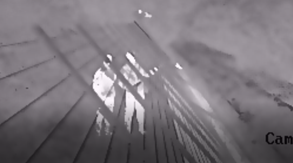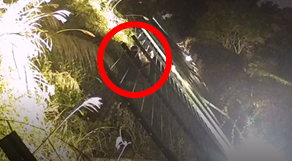Thermal camera applications

Concept
At its core, thermal cameras detect temperature by screening different levels of infrared light through a method known as thermography. All objects emit infrared radiation, but a higher temperature correlates to a higher level of radiation emission. Due to this, biological organisms (e.g. humans, animals, etc.) emit a relatively larger amount of radiation relative to the surrounding natural environment, making them more visible to these cameras during both day and night.
Uses in security environment
In recent years, thermal cameras have seen an increased use in residential developments, particularly for perimeter protection. Because thermal cameras can measure the differences in heat signatures their line of view, they produce high-contrast images and reveal intruders in complete darkness, rain, fog, and other adverse weather conditions.

In addition, thermal cameras can penetrate through shrubbery and tall grass, and facilitate detection for far away intruders that are not easily visible on a guard room monitor. This function enables security personnel to easily detect opportunistic intruders, enabling them to locate the point of intrusion accurately, and allow them sufficient time to facilitate an immediate and commensurate response. The presence of thermal cameras also act as a deterrent to professional intruders who have knowledge that these systems are in place.

All of the above factors make thermal cameras a prime candidate in providing a comprehensive and foolproof solution perimeter protection.
Comparison to Visual Cameras
The main difference in thermal and visual cameras is their ability to contrast their intended detection targets (i.e. potential intruders) with the surrounding environment, especially during nighttime and/or adverse weather. It is exceedingly difficult for visual cameras to track targets in suboptimal conditions, and they can be affected by a large number of changes in weather and lighting. Thermal cameras are more reliable in this sense, being less prone to sharp changes in lighting, shadows, backlight, etc.

It should be noted that thermal cameras are not advised to be used on their own, and should instead be coordinated with visual cameras in order to compensate for each other’s disadvantages. Our experts agree that for people looking for a reliable and complete detection solution, thermal cameras provide an enhanced protection that can’t be provided solely by visual camera functionality.
Apart from installing both cameras separately, another option is the 2-in-1 visual / thermal camera slowly gaining popularity in the CCTV market. However, convenience comes at the expense of utility, and the thermal capabilities of the 2-in-1 is comparatively lower.
Real Intrusion Case from UCS
From our years of experience, we have observed many cases where thermal cameras are able to assist in detecting and even identifying intruders. Below is a case study which shows the difference between thermal cameras and visual cameras. In this situation, the intruders targeted separate parts of the perimeter fence. The section utilizing thermal cameras was easily able to identify intruders in pitch darkness, whilst with the section utilizing visual cameras, it was difficult to pinpoint intruders even with lighting. These cameras were integrated with the D-Fence pressure-sensing perimeter intrusion detection system (PIDS), which immediately sounded an alert when the intruders attempted to climb over the perimeter fence, forcing them to flee.


Comments